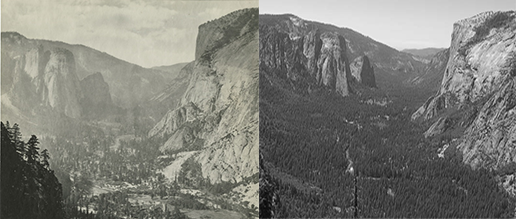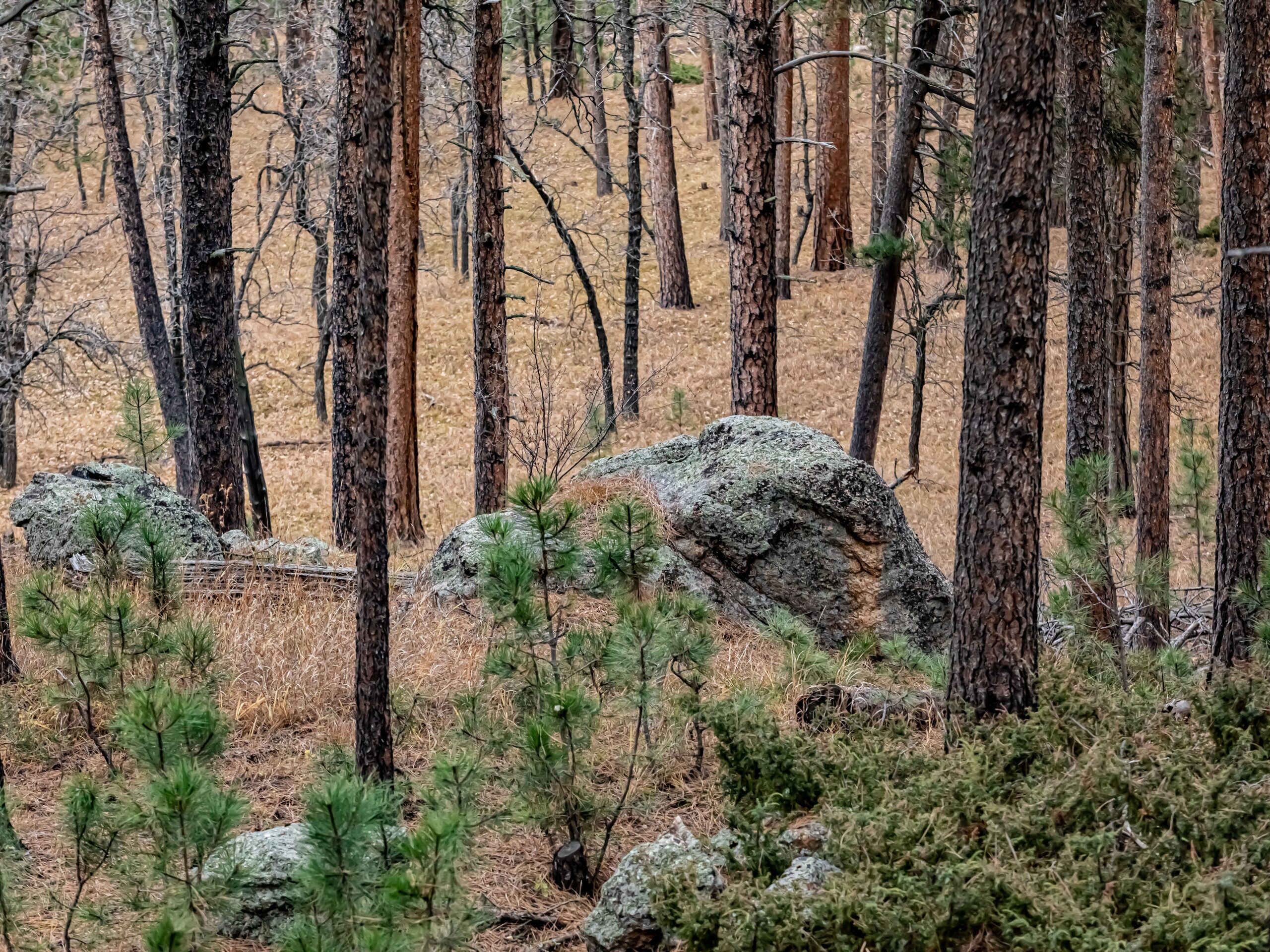Yosemite Valley is known for its scenic grandeur. But when Maria Lebrado returned 78 years after her tribe was driven out of the region, she was unimpressed. A guide described Lebrado seeing the valley for the first time since her childhood: “The wide open meadow of her day was covered with trees and shrubs. She shook her head, saying, ‘Too dirty; too much bushy.’”
Throughout Yosemite, the landscape today is much different than the one seen by early white visitors. “The inviting openness of the Sierra woods is one of their most distinguishing characteristics,” wrote John Muir in 1894. Frederick Law Olmsted’s 1865 report on Yosemite described “miles of scenery” and “the most tranquil meadows.” Since then, 75 to 90 percent of those meadows have been lost to larger and denser forests. What’s emerged is a new landscape that would be in many ways unrecognizable to its earliest visitors.
“Much of the landscape in California that so impressed early writers, photographers, and landscape painters was in fact a cultural landscape, not the wilderness they imagined,” writes ecologist M. Kat Anderson. “While they extolled the ‘natural’ qualities of the California landscape, they were really responding to its human influence.” Native Americans regularly set fire to the region to clear forests, maintain open meadows, and grow food.
So what is the true character of Yosemite undisturbed by human action? Is it dense forests or open meadows? We cannot readily say. In many ways the only Yosemite we’ve ever known is one created by the actions—or deliberate inactions—of people. Even tougher is the policy question: If the Yosemite protected by early preservationists was the product of human influence, then to what state should it be managed today? In fact, the National Park Service recently established a controversial plan to cut thousands of trees in Yosemite in an effort to restore scenic vistas that have been obscured by the growing forest.
This example underscores a fact that is shaking the core of the conservation community: Virtually all of the world’s landscapes have been shaped, and are continuing to be shaped, by human action. Scientists have even proposed a new word for this brave new world: the Anthropocene. The idea of the Anthropocene implies new questions for conservationists to consider. Chief among them: What does it mean for environmental policy?
In December, PERC hosted a two-day workshop to address the policy implications of the Anthropocene. Thanks to the Searle Freedom Trust, which funded the workshop, this special issue of PERC Reports explores several of the ideas discussed at the workshop. The articles challenge the conventional thinking about a variety of environmental policy topics and offer an ambitious vision for the future of environmentalism in the Anthropocene.
Click here to read the full issue online, or click here to download a PDF.




